Storytelling is undergoing a transformation. The traditional top down model where stories are told by a single voice to a passive audience is giving way to more dynamic, participatory forms of ethical storytelling. Community storytelling, paired with the concept of co-creation, is at the forefront of this transformation, offering profound opportunities for engagement, understanding through common values and experiences, deep listening, and impact. This blog explores the importance of community storytelling and its relationship with co-creation, illustrating how they can enrich collective narratives, deepen connections between and within communities and contribute to a more ethical storytelling.
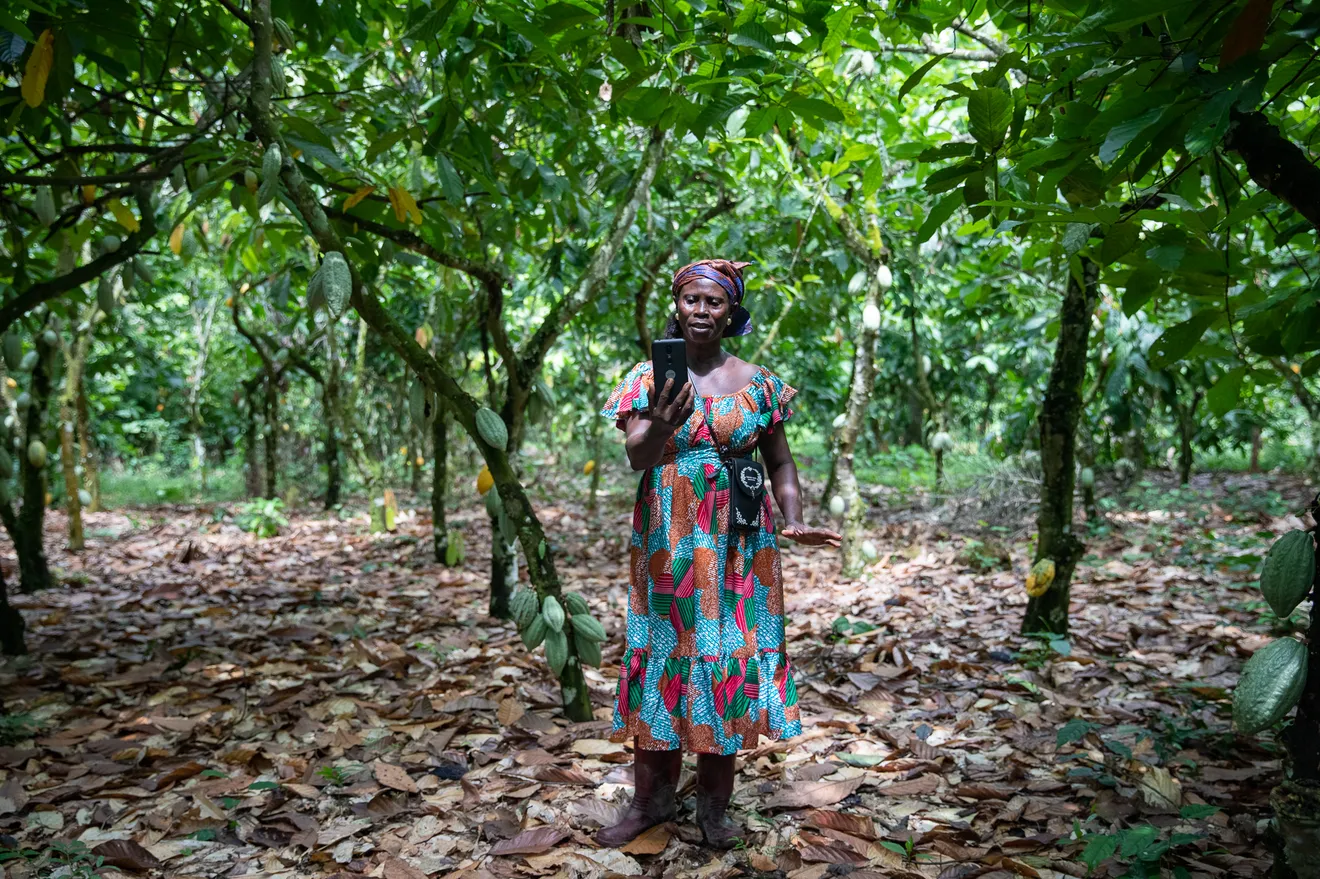
Mina Antwiwaa records a selfie video on her farm in Abakoase, Fanteakwa, Eastern Region of Ghana, on November 10, 2021. She makes these videos as a part of the impact dairies of her journey as a cocoa farmer. “The change in climate has delayed our harvest. The rains didn’t come as expected, but we are hopeful for a great harvest” says Mina.
Photo: Nipah Dennis / Fairtrade Germany / Fairpicture
Community storytelling, also named participatory storytelling, contributory storytelling or inclusive storytelling depending on context, focuses on narratives that are rooted in the experiences and perspectives of a community. This approach recognises the diverse voices within a community and elevates them to share control of the narrative process. By doing so, it ensures that the visual and narrative stories reflect the authentic and multifaceted realities of community members.
The significance of this approach lies in its inclusivity and representativeness. Stories are not just told about community members; they are told by and co-created with them. This method breaks down barriers of misunderstanding and misrepresentation, as it values each individual’s input and acknowledges their lived experiences as part of the collective narrative. It is important to remember that community members are at the center of relationships with different groups, systems and structures including being beneficiaries of the services or programs NGO’s and ethical businesses provide.
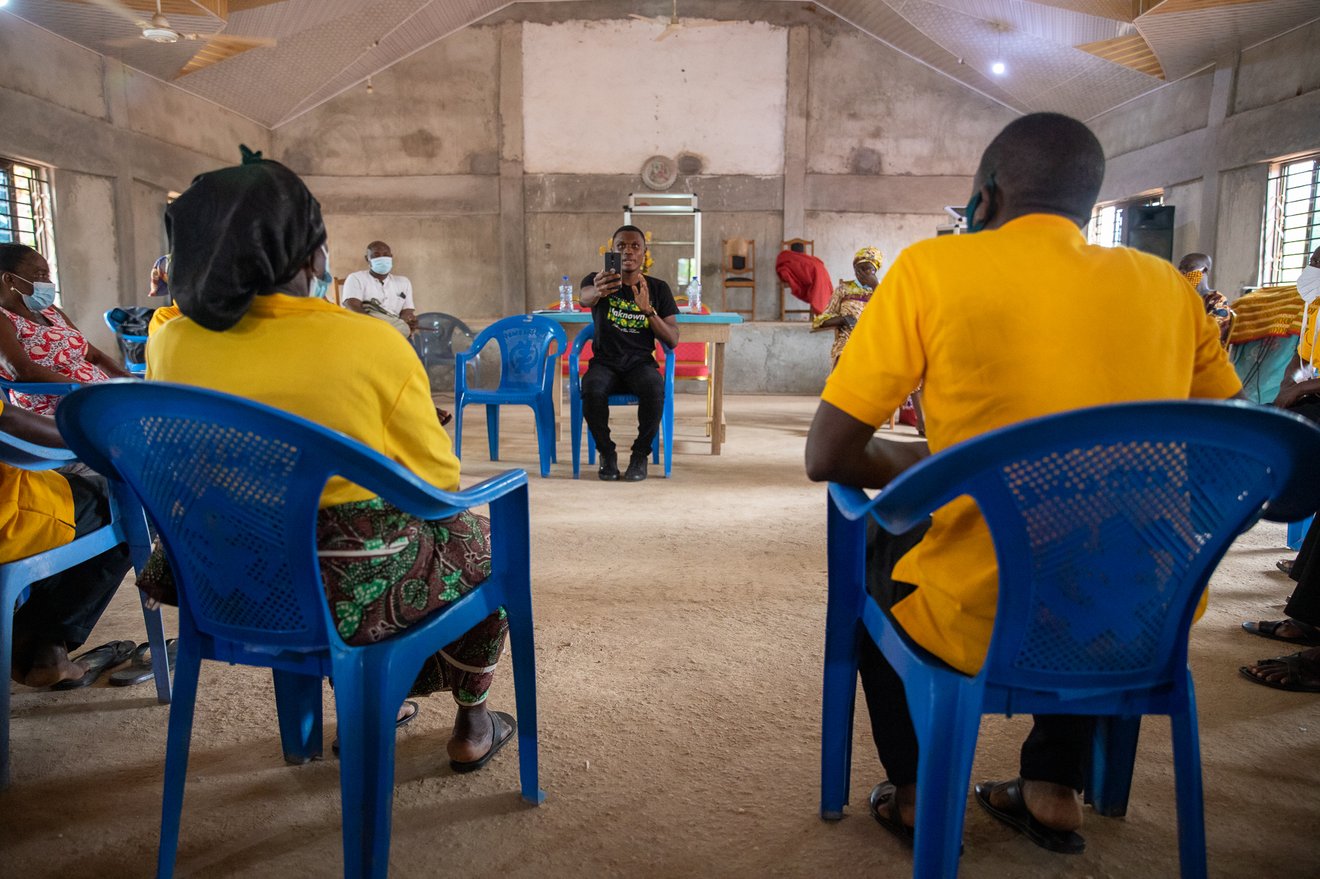
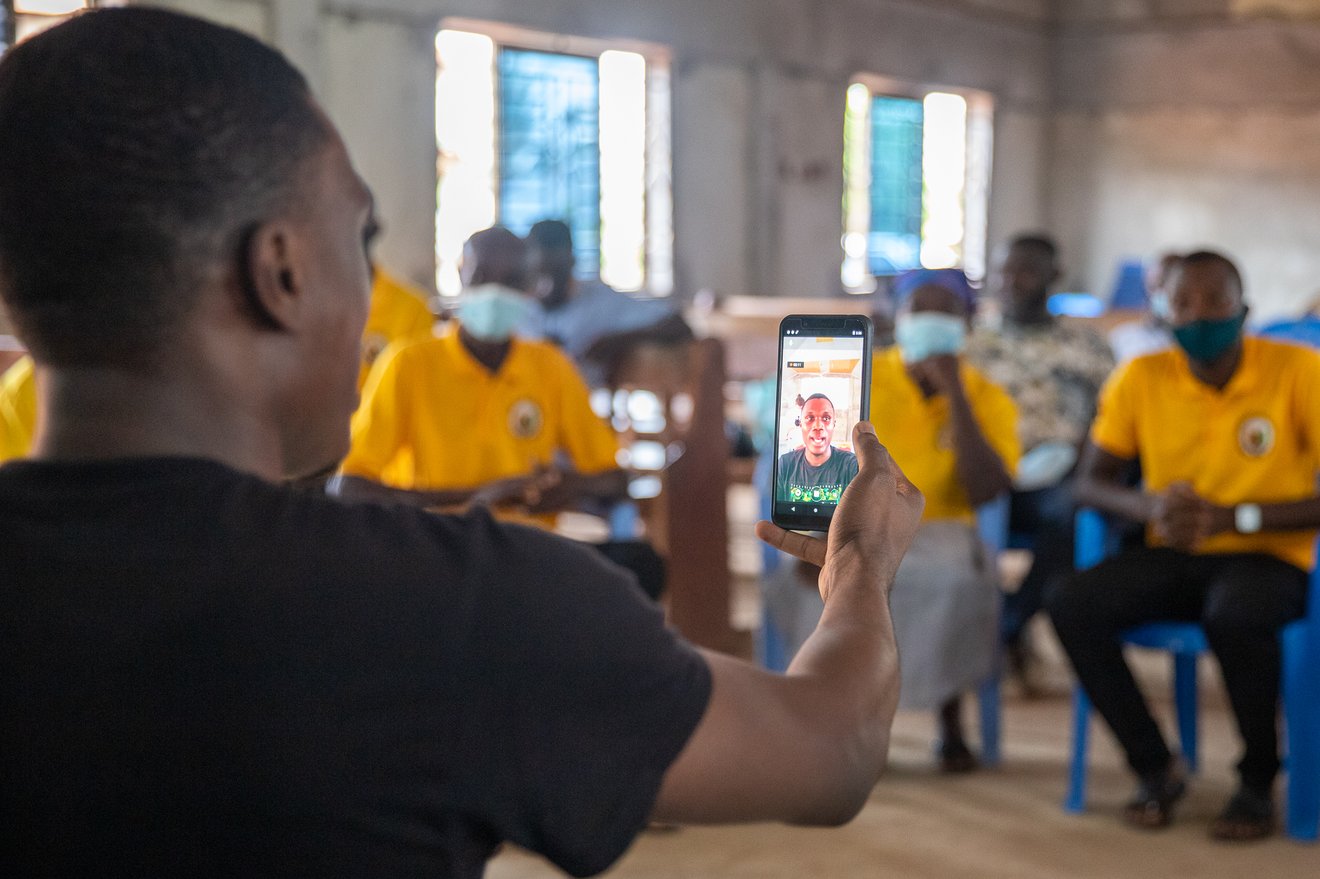
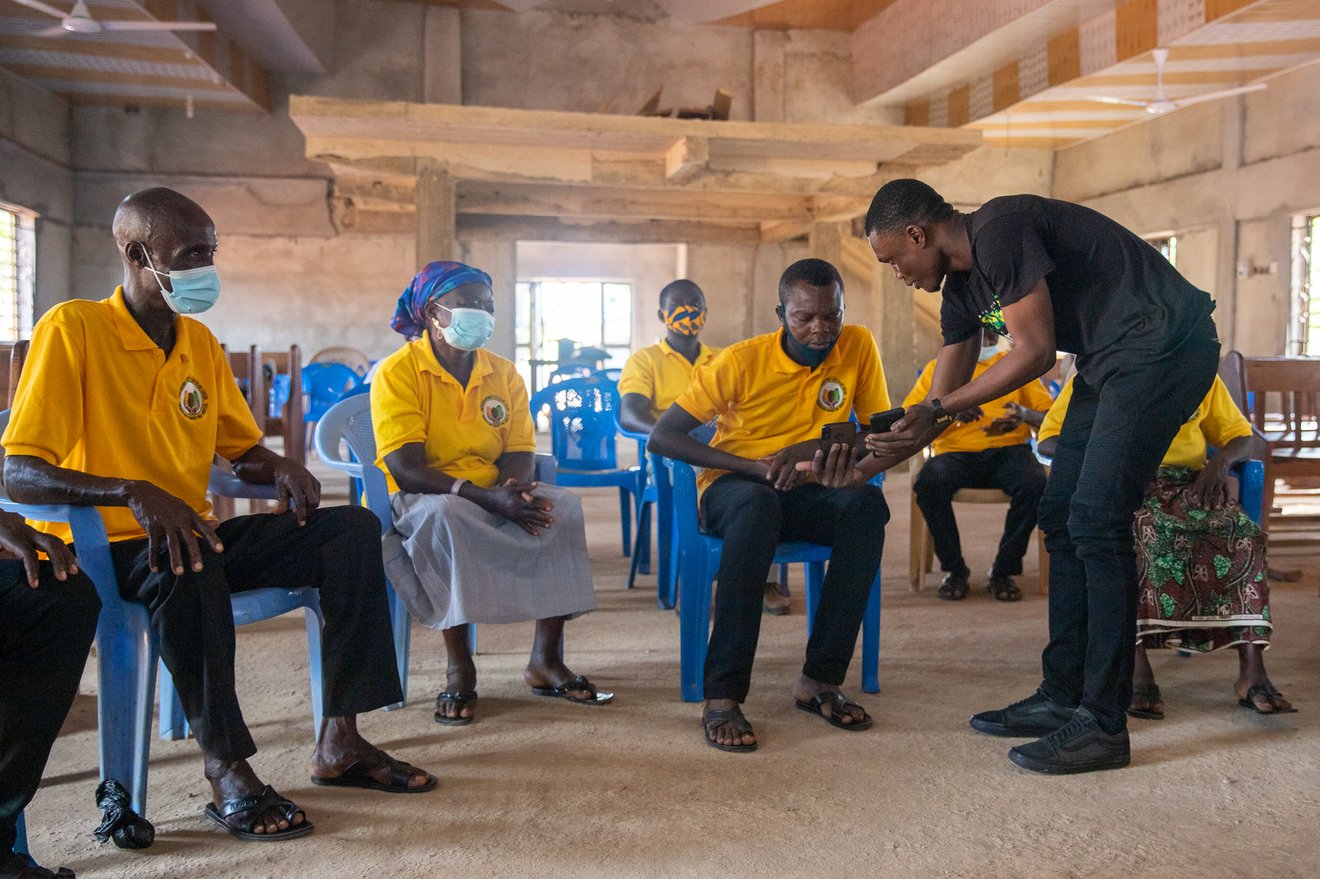
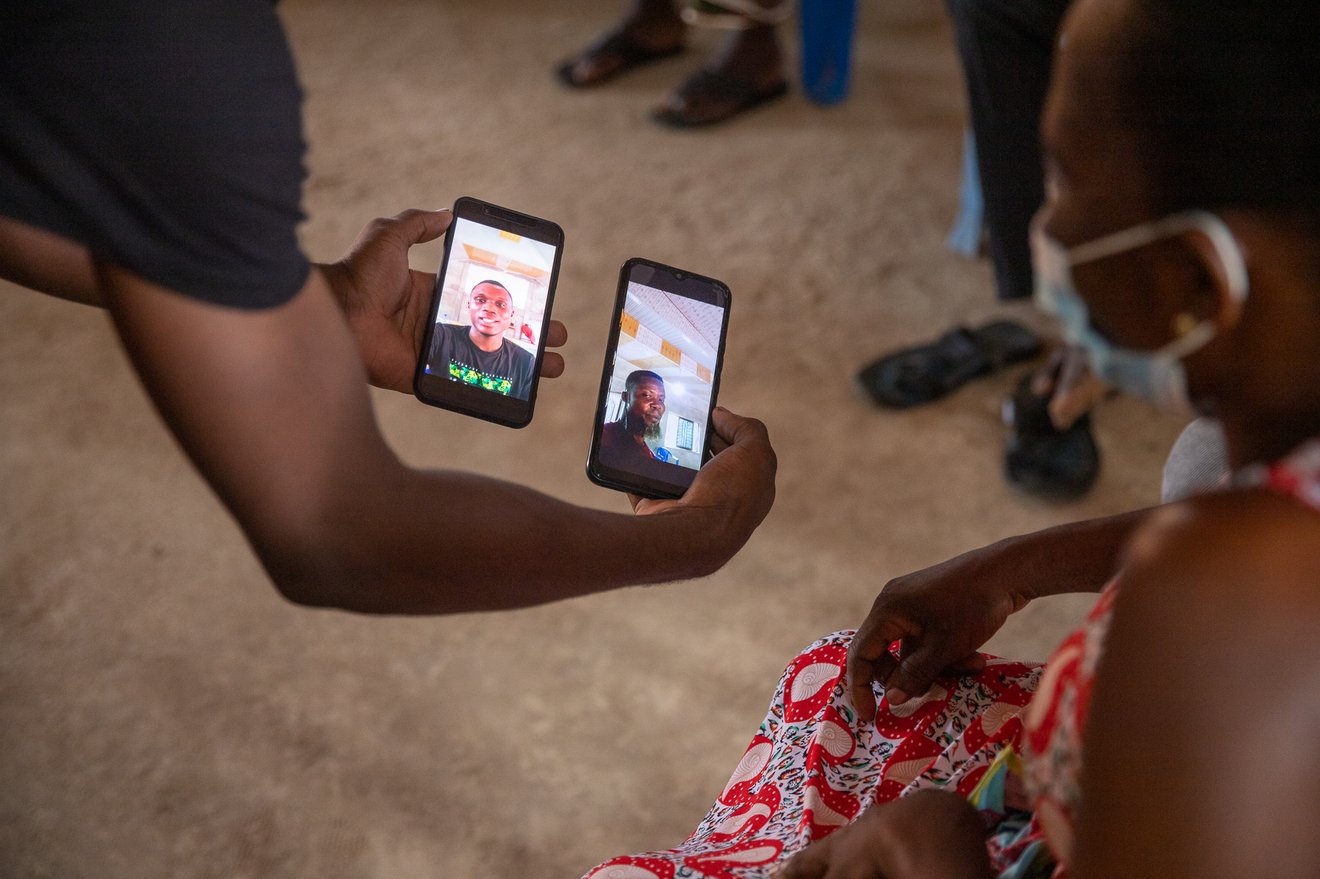
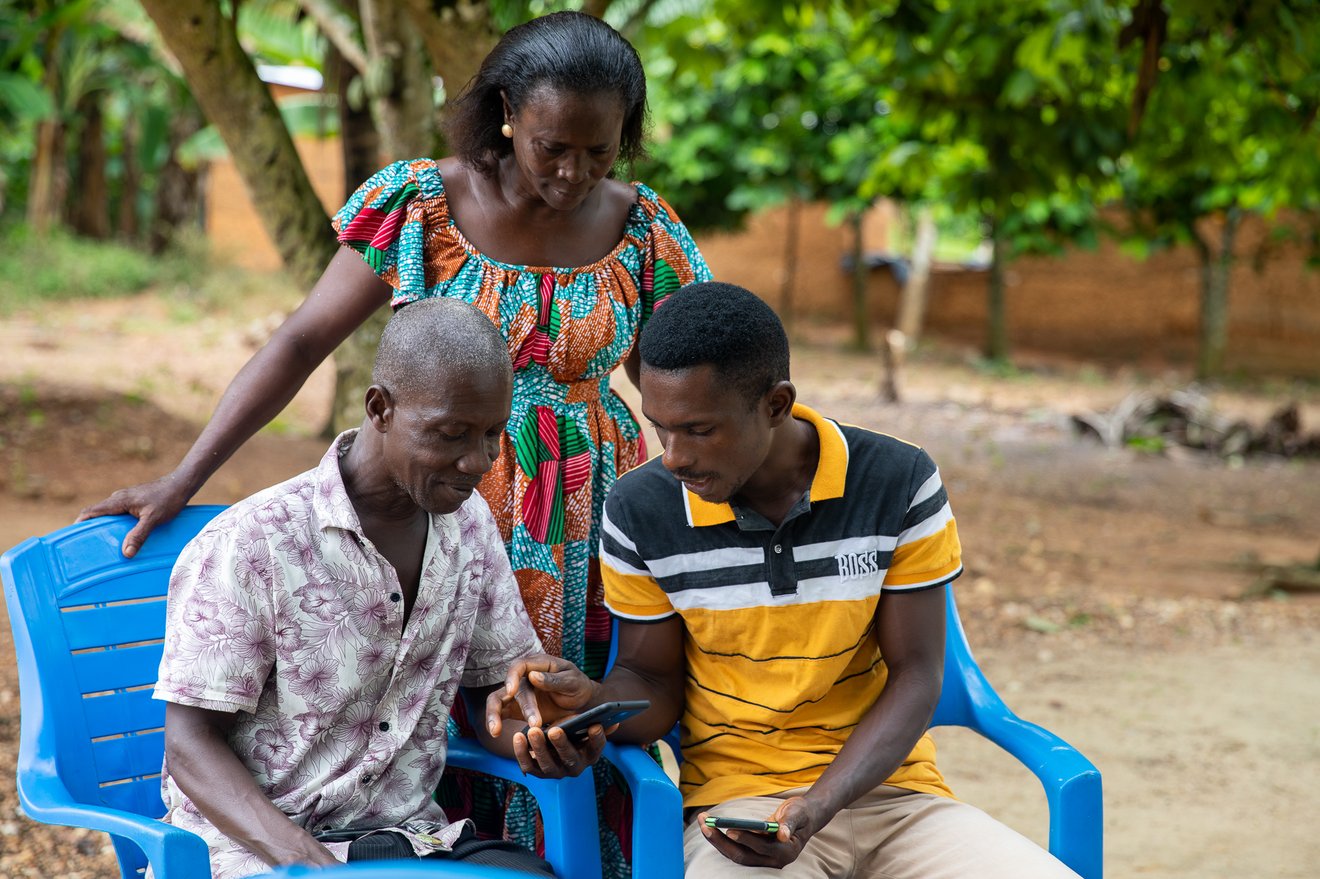
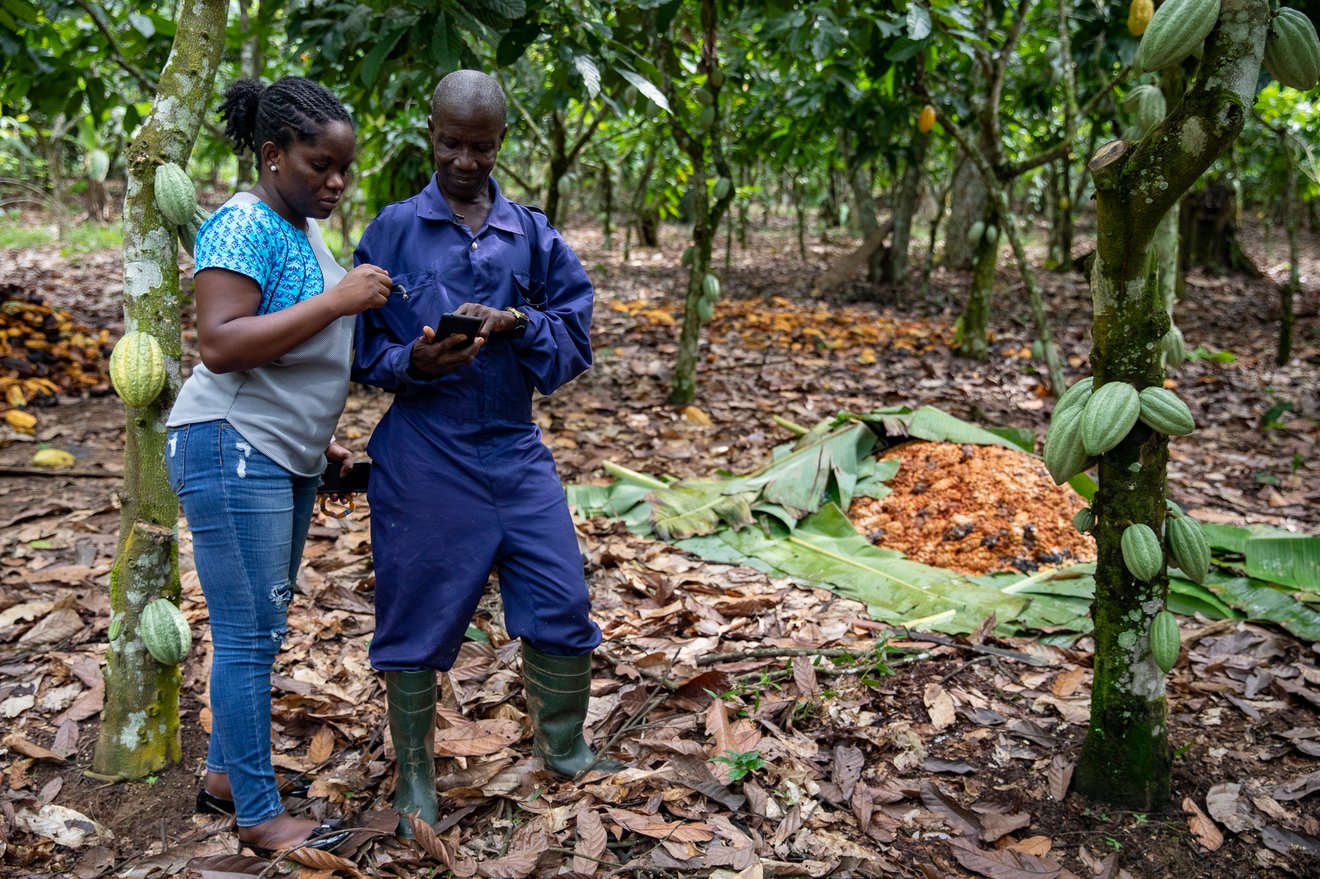
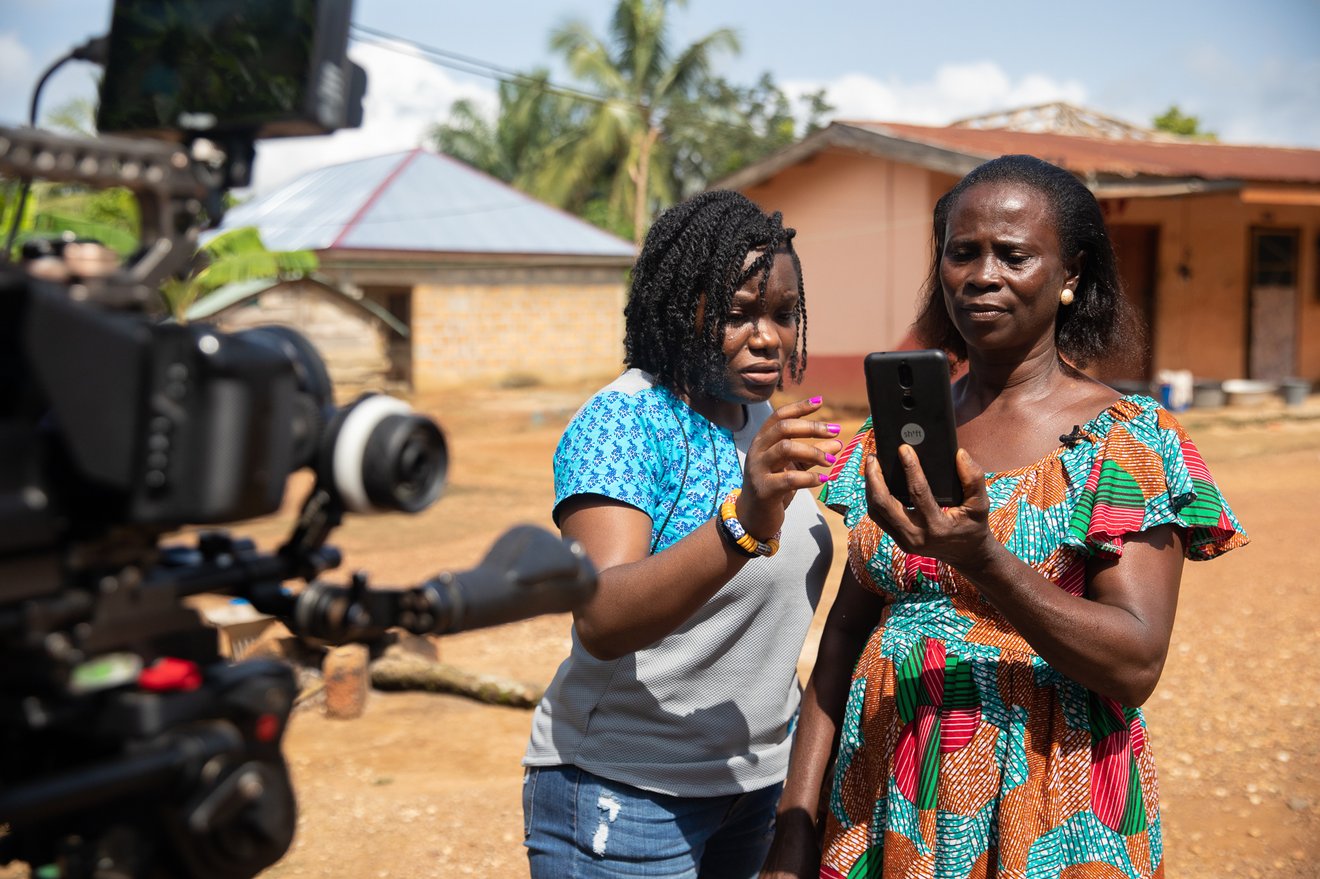
Matthew Lartey, Youtuber from Accra, interacts with cocoa farmers during a selfie video training at Abekoase, Ghana, on April 12, 2021.. Fairtrade and two partners initiated a project on living income for cocoa farmers two years ago in Ghana. 'Impact Diaries' is the name of an awareness-raising campaign that reports on this project and puts the people who are affected by it at the centre and lets them have their say.
Photo: Nipah Dennis / Fairtrade Germany / Fairpicture

FairTalk #14: Reclaiming Ethical Fundraising in a Time of Nonprofit Cuts is happening on 10th June 2025, at 5pm CET.
This is part of our ongoing series exploring the role of ethics in visual storytelling and communication across the nonprofit and development sector.
Join us live to explore how NGOs can respond to today’s funding pressures without compromising their values.
Co-creation in storytelling is a collaborative process where community members work alongside storytellers, such as photographers and filmmakers, to craft narratives that incorporate diverse perspectives. For Fairpicture and its clients, this means producing stories that reflect the insights and perspectives of community members, creators, and communication professionals alike. This partnership ensures that the final narrative is enriched by multiple viewpoints, truly representing the lives and experiences of those depicted.
N'Deane Helajzen
Fairpicture Marketing & Sales Manager
True co-creation is not merely about amplifying the voices of community members but about creating stories together. Unlike community-created content, which can lack collaboration from all partners and may lead to adoption challenges, co-creative efforts aim to level the playing field. This approach fosters genuine collaboration, allowing all stakeholders to contribute meaningfully by working together.
This method does more than produce authentic and engaging stories; it also empowers the protagonists, granting them agency in how their stories are told and shared. Co-creation cultivates a sense of ownership and pride among community members, as they see their voices and experiences shaping the narrative. This inclusive process ensures that the stories are not only compelling but also truly representative of the communities involved.
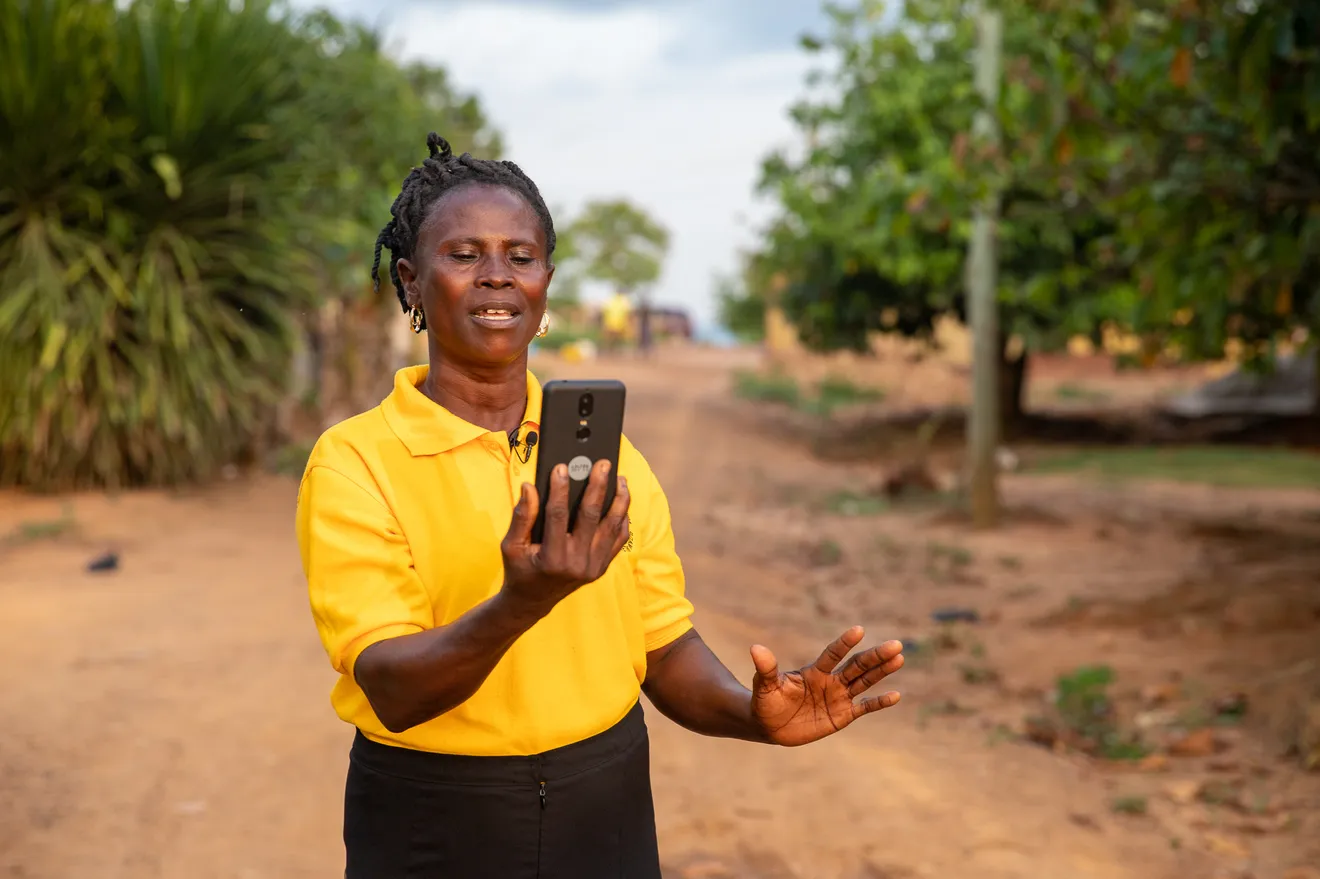
Mina Antwiwaa, Fairtrade Impact Diaries Ambassador, records a selfie video of her experience as a cocoa farmer. Abekoase, Ghana. April 13, 2021
Photo: Nipah Dennis / Fairtrade Germany / Fairpicture
Stories hold immense importance. They teach important lessons about a society’s culture, the land and our interaction with each other and the environment. Stories foster connections, cultivate empathy, and remind us of our shared values and common humanity. By sharing stories through still and moving image we're doing more than recounting experiences; we're crafting narratives that spotlight the issues, challenges, and injustices people face. At the same time, we showcase the impact of our clients’ work, driving support and raising funds for future initiatives. Through these stories, we illustrate the prudent use of clients' funds and the significant, positive social changes those investments have brought about.
However, traditional or conventional storytelling can easily become an act of mere extraction. An outsider photographer or videographer might spend a day or two in the community, unable to establish transparent relationships and trust. We “take’ or “capture” photos and videos without providing anything in return, including explaining the purpose of the shoot or where those still and moving images will be used. Consent often becomes a mere checkbox, lacking genuine understanding or agreement.
This scenario involves complex and uneven power dynamics, especially when those posing the questions also control resources or make funding decisions. By acknowledging these dynamics, we aim not only to collect stories respectfully but also to share richer, more nuanced, and authentic narratives.
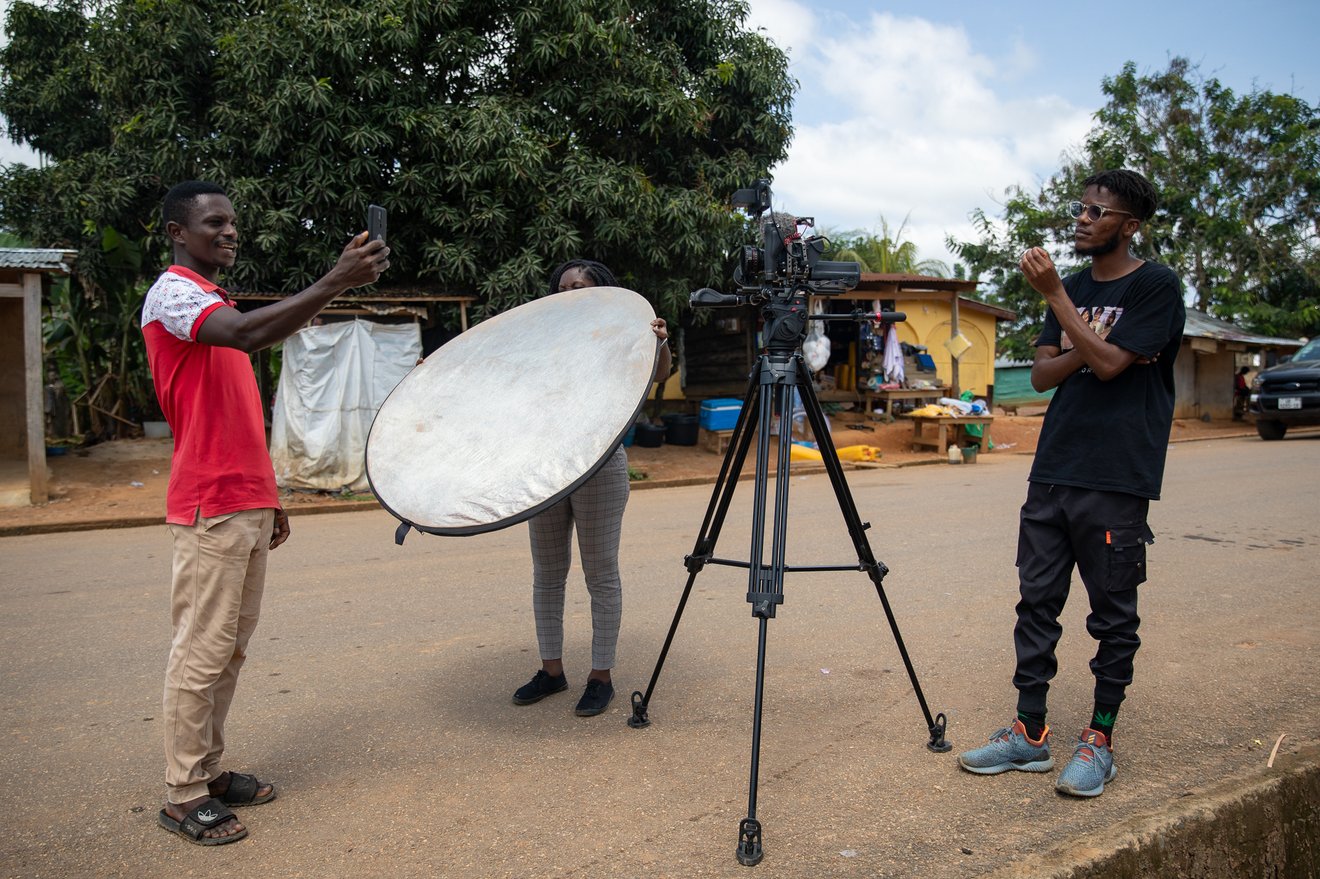
Behind the scenes: Bismark Domena, Fairtrade Impact Dairies ambassador and Caleb Odartey Aryee, Fairpicture cinematographer from Ghana while documenting the recording of a new selfie video.
Photo: Nipah Dennis / Fairtrade Germany / Fairpicture
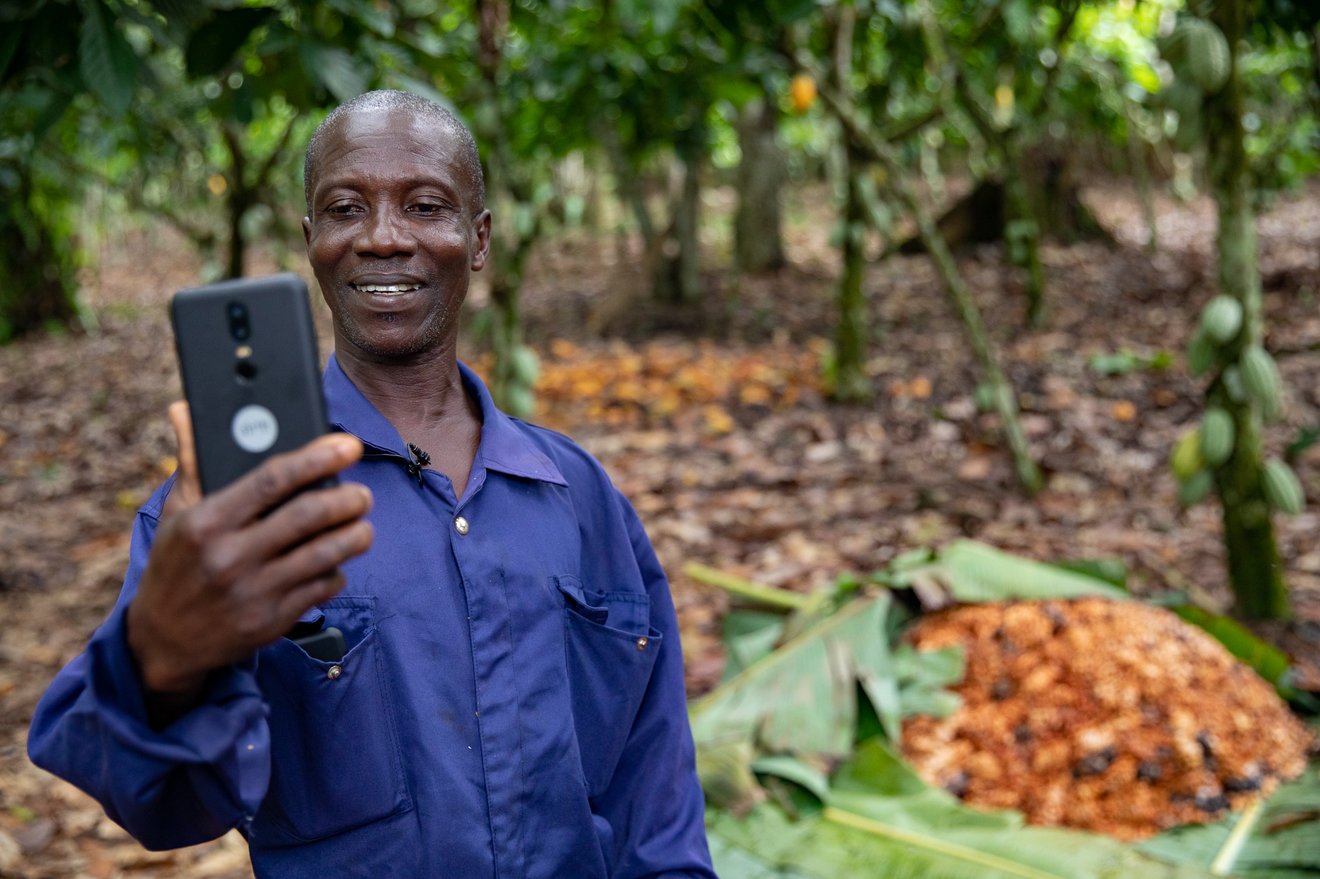
Photo: Nipah Dennis / Fairtrade Germany / Fairpicture
Fairpicture has developed some key principles and a code of conduct which aims to put the people in the pictures at the center of their own narratives and the decisions we make around storytelling. While our actions are guided by a Theory of Change, believing in the transformative power of visual communication.
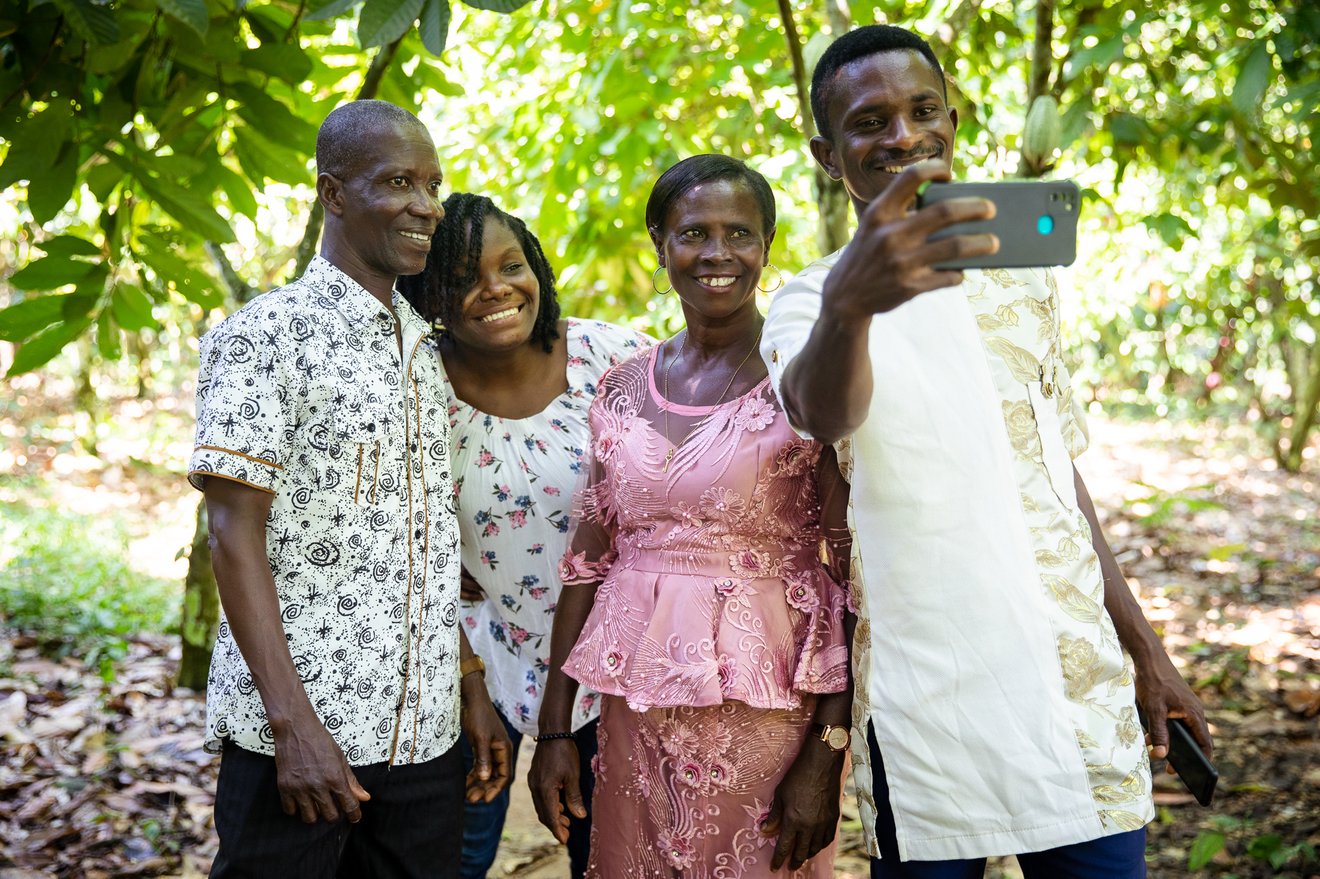
Photo: Nipah Dennis / Fairtrade Germany / Fairpicture
When it comes to storytelling, it’s all too easy to speak on behalf of others. But if we are putting people at the center of our stories, then we need to remember our role is to represent people as individuals – to ask not just what we want to know, but what they want to share. A fair picture is fair to all those involved in its production, distribution, and consumption.
Our goal is that pictures contribute to equal relationships between visual creators, portrayed people, clients, and the general public. By integrating community storytelling and co-creation into our work, we aim to create more authentic, respectful, and impactful narratives. This approach not only amplifies diverse voices but also fosters a sense of collective ownership and empowerment.
As we embrace these methods, we can look forward to a more inclusive and representative world of storytelling, where every voice has a chance to be heard and valued. We’re listening, learning, and improving all the time – and we hope you’ll continue to join us on this journey.
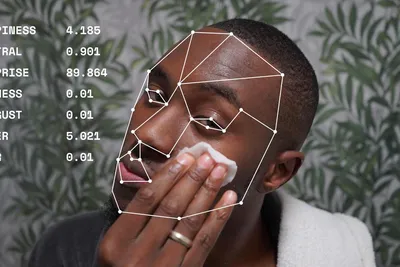
November 2025 - Prof. Dr. Peter G. Kirchschlaeger
This article explores what truly makes a picture “ethical” in the age of AI-generated imagery, arguing for human-made, consent-based visuals that respect truth, dignity and autonomy.
Learn more about Ethical Pictures in the Age of AI – An Opinion Piece
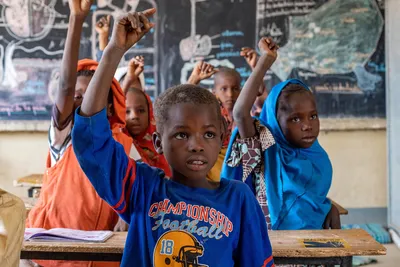
November 2025 - Arwa Elabasy
Discover how transparent communication and ethical storytelling can help NGOs and non-profits build trust, foster inclusion, and challenge traditional narratives.
Learn more about Truth in the Age of Machines: Why Ethical Communication Is Humanity’s Last Campaign
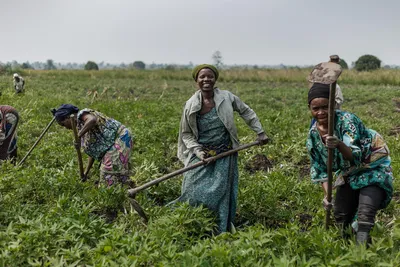
October 2025 - David Girling
Interviews with storytellers from Cambodia, Burundi and Kenya show how NGOs can turn ethical guidelines into practice—centering consent, dignity and context.
Learn more about The Practicalities of Ethical Guidelines in NGO Storytelling